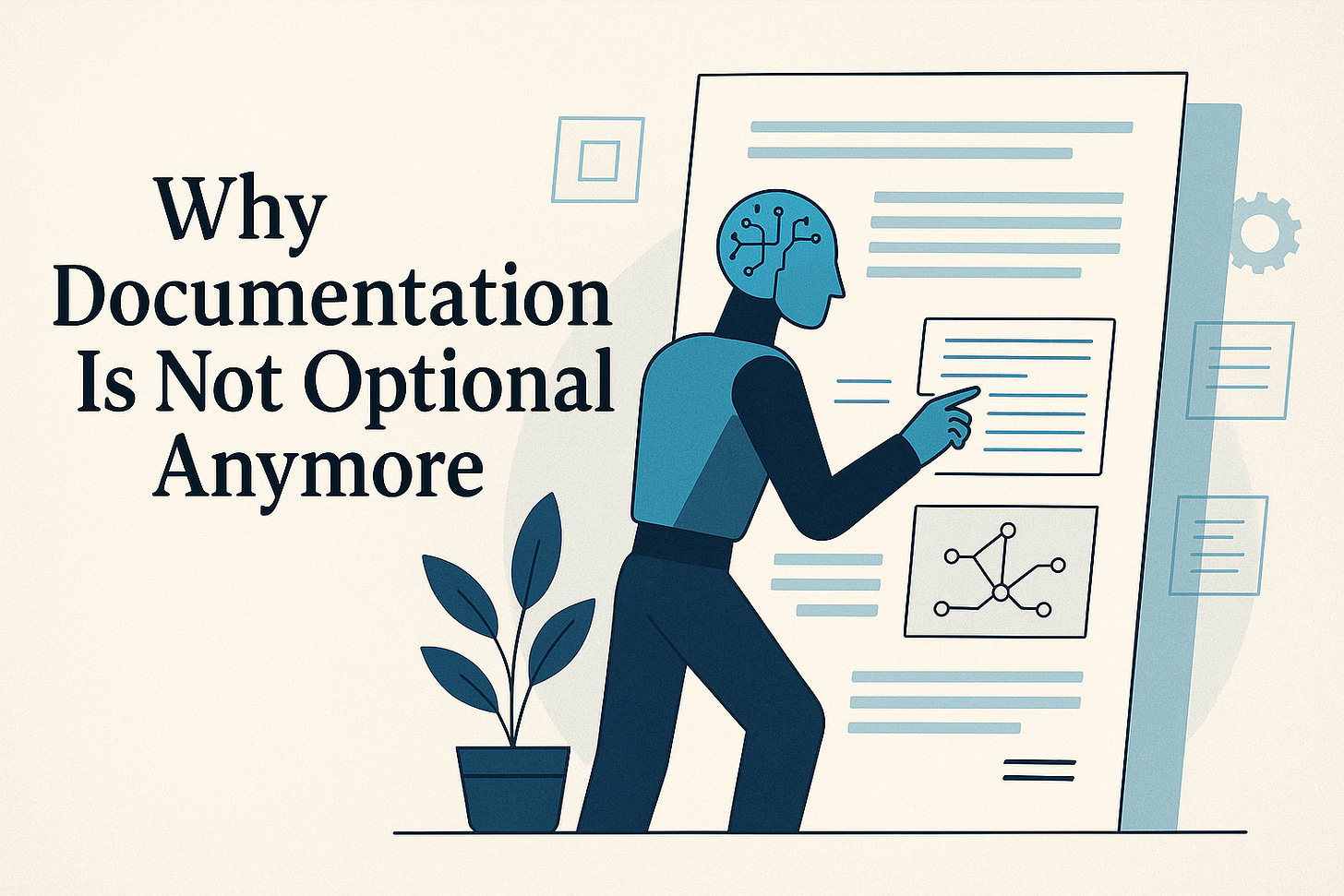Why Documentation Is Not Optional Anymore
How the rise of AI changes the way software engineers should treat documentation
There was a time when documentation was treated almost as an afterthought — something we caught up on when the real work was "done," a checkbox for compliance, or a dusty internal wiki few would read. In today's world, that mindset isn't just outdated — it's dangerous.
The rise of AI has changed the stakes permanently. We are no longer writing documentation just for humans who can "ask around" or "figure it out." We are increasingly writing it for machines that learn from the data we leave behind.
And AI is unforgiving when it comes to ambiguity.
Documentation Is Data
AI systems — whether they are large language models, autonomous decision-makers, or internal copilots — are only as good as the data they are trained on. In a technical organization, that "data" is not just tables in a database or metrics streaming from production. It’s every engineering decision memo, every architectural rationale, every product requirement, every bug report carefully closed out with context, not just "fixed."
Poor documentation is poor training data. Worse yet, undocumented decisions become invisible. When AI tools trained on organizational knowledge fail to answer critical questions, fail to predict outcomes, or hallucinate information, it won’t be because the technology failed — it will be because we did not leave a clean trail behind us.
Every undocumented decision we make today is a blind spot we plant for tomorrow.
Leadership Through Documentation
Leading technical teams has taught me one hard truth: speed without clarity eventually creates drag. We cannot continuously ship, pivot, and scale unless there is a foundation of well-understood context. I used to think that real leadership was about pushing harder, solving crises faster, being the one others could always count on to "just know."
But transformational leadership is not about being the bottleneck for understanding. It’s about building systems where clarity persists beyond individuals.
Documentation is a core part of that system.
When we document not just what we did, but why we made certain decisions — trade-offs, rejected alternatives, context about constraints — we are building organizational resilience. We are preparing not just for new team members, but for new tools, new challenges, and new technological paradigms that will expect that knowledge to be accessible and structured.
Quality Over Quantity
There is a fear among engineers that "documentation" means bureaucratic busywork. I share that concern. I’ve seen documentation initiatives drown in meaningless templates, superficial checklists, and massive documents nobody reads. That is not what I am advocating.
The future of documentation must focus on:
Clarity over verbosity: A crisp paragraph explaining why is worth more than a dozen diagrams showing what.
Context over procedure: Documenting not just how a system works today, but how we expect it to evolve.
Curated knowledge over raw artifacts: Documentation that is discoverable, relevant, and maintained, not a growing landfill of abandoned wikis.
Well-crafted documentation is a leadership tool. It teaches, it mentors, it accelerates decision-making, and now, it trains AI models that will increasingly become our teammates.
A Strategic Imperative
If we want AI tools to truly augment our engineering teams — to debug faster, design better architectures, spot risks earlier — we need to feed them structured, thoughtful, human context. We cannot automate wisdom. But we can document the pathways to it.
Treat documentation as an investment. Every hour spent documenting today is an hour we save not just next quarter, but across every future team, every future model, every future product we have yet to imagine.
In a world where technology will remember what we teach it, let’s be intentional about what we leave behind.
Because if we don't, we are not just slowing ourselves down — we are teaching our future systems to fail.


